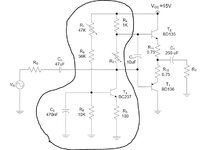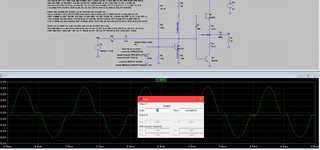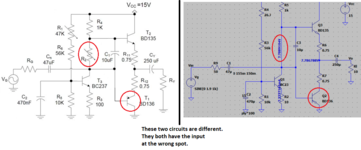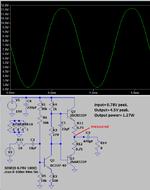michaelScott
Junior Member level 2
Hello everyone, I'm having difficulty to understand the circuit below. Could you please help me about that.
What C1 transistor stands for? and What the rectangled area's purpose for the circuit.
How is it able to change the class ab and b configuration just by changing the R1 and R2 resistor values.
Thanks in advance.
What C1 transistor stands for? and What the rectangled area's purpose for the circuit.
How is it able to change the class ab and b configuration just by changing the R1 and R2 resistor values.
Thanks in advance.



